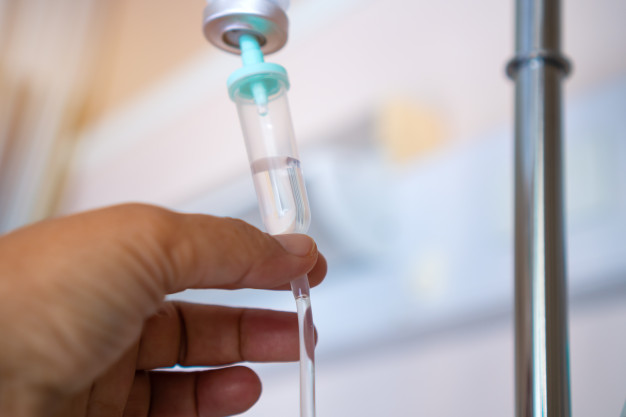NatureMed Now Offers Intravenous NAD Infusions

We are excited to announce that we now offer Nicotinamide Adenine Dinucleotide (NAD) intravenous infusions to our patients. We have the most advanced training available in intravenous therapies and 20 years of experience backing us.
What is Nicotinamide Adenine Dinucleotide (NAD)?
NAD is the co-enzyme (cousin) form of vitamin B3 (niacin). NAD contains niacin but is much more powerful. The key function of NAD is generating ATP through oxidative phosphorylation, also known as the electron transport chain within the mitochondria. ATP is the energy currency that drives cellular metabolism. Without it, we would die.
NAD gets converted back and forth to another compound called NADH. NAD can also be referred to as NAD+. NAD and NADH are found in different concentrations within tissues of the body. The heart muscle contains 90 mcg NADH per gram, muscle brain tissue contains 50 mcg/g, and red blood cells contain 4mcg/g. Tissues that contain more NADH generate more energy. Drugs and other toxins disrupt this delicate system.
See the NAD+ NADH Redox Reaction on our Intravenous NAD Infusions page
How Does NAD Help the Human Body?
NAD is used is in addiction recovery centers. Long-term drug and alcohol use can decrease energy production in the mitochondria, and intravenous NAD has been used at high doses to reboot cell machinery and reduce drug cravings. For this, patients start at 500mg and go up to 1200mg (sometimes higher).
NAD has also been used in experimental studies to treat Parkinson’s disease, fatigue, and other neuro degenerative disorders. Of interest is the fact that by age 50 NAD levels have declined by 50%. This decline is thought to be one of the causes of typical age-related conditions such as cognitive decline, decreased motor function, immune system dysfunction, and inflammatory conditions such as cardiovascular disease and arthritis. Increasing NAD levels in the blood can affect these aspects of human health through a number of different pathways.
Intravenous NAD Administration
NAD needs to be infused slowly in some patients. Rapid infusion may cause elevated heart rate and nausea. NAD is absorbed orally but intravenous infusions are 100% absorbed. Intravenous NAD does not have to navigate through the stomach and liver after ingestion, it just goes straight into the blood. Additionally, acute levels of NAD may be achieved by facilitating quicker cellular repair. It’s a good idea to take coenzyme Q 10 and oral NAD every day as well.
The standard protocol for anti-aging treatment is one 500mg IV per month. We have also found that lower doses given more frequently provide even better effects. We strongly recommend getting blood work prior to treatment to look at certain markers and then the patient has visibility into before and after improvements. A biological age test before, and 12 months after receiving IV NAD can be educational. This test measures methylation points on DNA and is considered to be the most accurate test to date.
Are NAD Infusions Right for You?
First, if you have any arterial disease (atherosclerosis), inflammatory or neurological disorders, unexplained fatigue, or are an athlete over 50 years old–intravenous NAD could help. If you are interested in slowing the aging process it is also a good treatment to try.
Learn More About Intravenous NAD Infusions
Verdin E. NAD⁺ in aging, metabolism, and neurodegeneration. Science. 2015 Dec 4;350(6265):1208-13.
Rajman L, Chwalek K, Sinclair DA. Therapeutic Potential of NAD-Boosting Molecules: The In Vivo Evidence. Cell Metab. 2018 Mar 6;27(3):529-547.
Matasic DS, Brenner C, London B. Emerging potential benefits of modulating NAD+ metabolism in cardiovascular disease. Am J Physiol Heart Circ Physiol. 2018 Apr 1;314(4):H839-H852.

